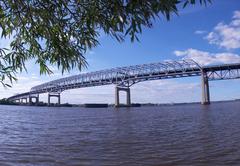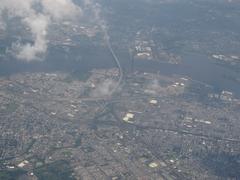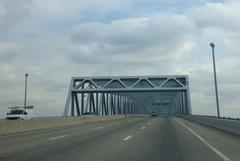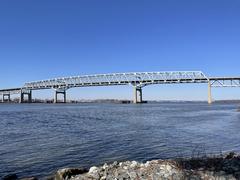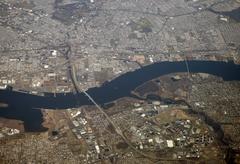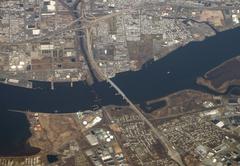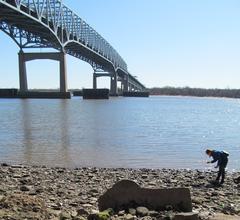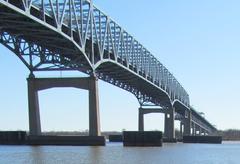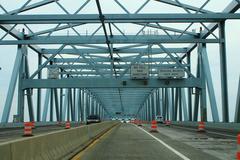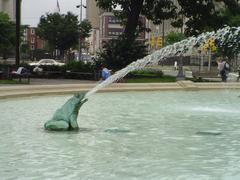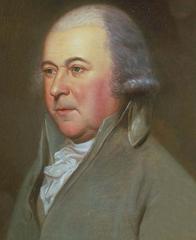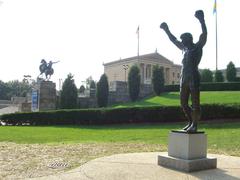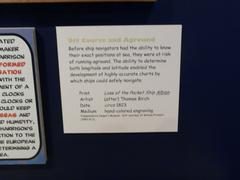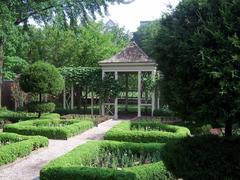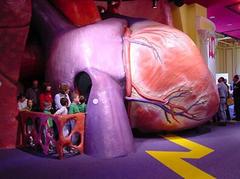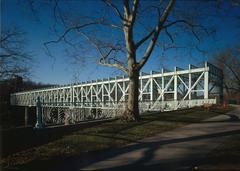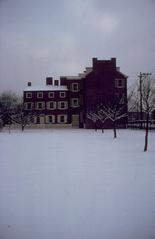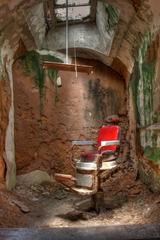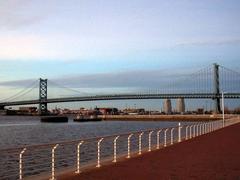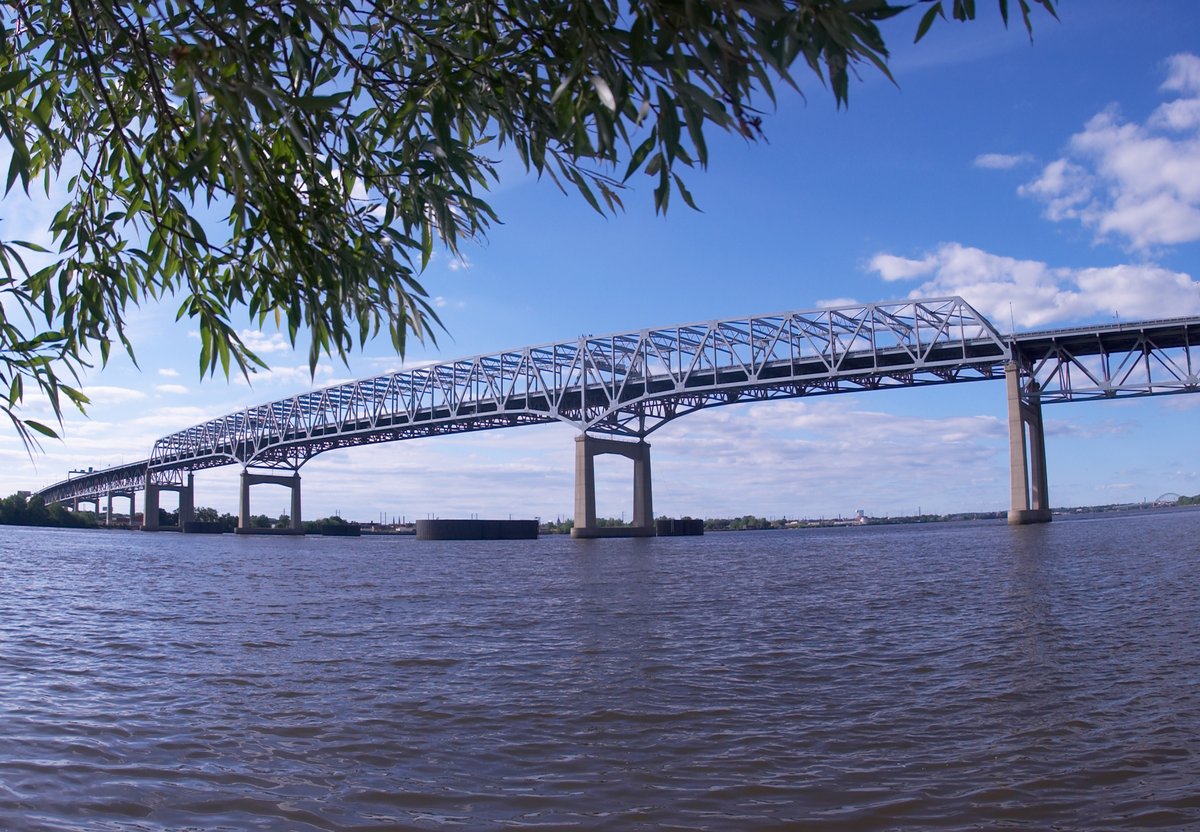
Comprehensive Guide to Visiting Betsy Ross Bridge, Philadelphia, United States
Date: 01/08/2024
Introduction
Visiting the Betsy Ross Bridge in Philadelphia offers a unique blend of historical significance, architectural marvel, and practical travel information. Named after the legendary Betsy Ross, who is credited with sewing the first American flag, this bridge not only serves as a vital transportation link but also stands as a historical landmark. Spanning the Delaware River, it connects Philadelphia, Pennsylvania, to Pennsauken, New Jersey, and was inaugurated during the U.S. Bicentennial celebrations in 1976. This comprehensive guide delves into the bridge’s history, architectural details, toll information, and provides valuable travel tips for potential visitors. Understanding the significance of the Betsy Ross Bridge and planning your visit effectively will enhance your experience. For more detailed travel tips and historical insights, our mobile app Audiala and related posts are invaluable resources for staying updated on this iconic structure. (Visit Philly, National Park Service, CBS News).
Table of Contents
- Introduction
- History of the Betsy Ross Bridge
- Structural Details
- Toll Information
- Community Impact and Controversies
- Visitor Information
- Visitor Tips
- Safety and Accessibility
- Environmental Considerations
- Cultural Significance
- Events and Celebrations
- Future Developments
- FAQ
- Conclusion
History of the Betsy Ross Bridge
Construction and Opening
The Betsy Ross Bridge, a continuous steel truss bridge, connects Philadelphia, Pennsylvania, to Pennsauken, New Jersey. Construction began in 1969 and was completed in 1974, but the bridge did not open to traffic until April 30, 1976, coinciding with the American Bicentennial Year. The delay in opening was due to issues with the communities where the bridge’s ramps to and from Richmond Street were located, including traffic congestion and the impact of heavy trucks on local roads.
Naming and Significance
Originally planned to be named the “Delair Bridge” after a nearby vertical lift bridge owned by Pennsylvania Railroad, the bridge was later named after Betsy Ross, a Philadelphia seamstress reputed to have created the first American flag in 1776. This naming made it the first automotive bridge in the United States named for a woman and the second U.S. bridge overall named for a woman, following Iowa’s Boone High Bridge, which was renamed the Kate Shelley High Bridge in 1912.
Structural Details
Connection to New Jersey Route 90
In 1988, construction connected the bridge to New Jersey Route 90, allowing drivers to use Route 90 to access Route 73, rather than via U.S. Route 130. This connection facilitated smoother traffic flow and provided a more direct route for commuters and travelers.
Redecking and Maintenance
In 2011, the Delaware River Port Authority (DRPA) initiated the process of awarding an engineering contract to plan the redecking of the bridge. The concrete deck, its asphalt overlay, and the joints between the concrete had deteriorated after 35 years of service. The study for this project was expected to take 30 months. Related improvements to Interstate 95 through Northeastern Philadelphia County led to the initiation of the Betsy Ross Bridge Interchange Project (Exit 26) in March 2015. This project aimed to replace the decking on the ramps on the Pennsylvania side of the bridge and complete the access ramps to Aramingo Avenue.
Historical Context and Unique Features
During the construction of the Betsy Ross Bridge, thousands of headstones from the historic Monument Cemetery were used as riprap on the embankments built for the bridge. Some of these headstones can still be seen along the edge of the Delaware River near the bridge during low tide.
Toll Information
A $5.00 one-way toll is charged for passenger vehicles entering Pennsylvania. Trucks, commercial vehicles, mobile homes, and recreational vehicles weighing at least 7,000 pounds (3,200 kg) gross vehicle weight pay $7 cash per axle. Seniors aged 65 and over can use a ticket program to pay $2.00 per trip, although this program is not integrated with E-ZPass.
Community Impact and Controversies
The bridge’s construction and subsequent traffic flow had significant impacts on the surrounding communities. The cancellation of the planned Pennsylvania Route 90, known as the Pulaski Expressway, resulted in unfinished bridges and flyover ramps, some of which were later constructed to serve nearby Aramingo Avenue in Philadelphia’s Bridesburg section. This route serves as a high-level multi-lane bypass, reducing congestion on the three-lane Tacony-Palmyra Bridge, which has a drawbridge on the span.
Visitor Information
Visiting Hours and Ticket Prices
The Betsy Ross Bridge is accessible to vehicles 24/7. A one-way toll of $5.00 is charged for passenger vehicles entering Pennsylvania, and trucks or commercial vehicles pay $7 per axle. Seniors can pay $2.00 per trip through a ticket program.
Guided Tours and Nearby Attractions
While there are no guided tours specific to the Betsy Ross Bridge, visitors can explore nearby Philadelphia landmarks such as the Liberty Bell, Independence Hall, and the Betsy Ross House. The surrounding areas offer rich historical context and numerous attractions.
Accessibility
The Betsy Ross Bridge is accessible to all vehicles, including those accommodating visitors with disabilities. There are no specific pedestrian paths, so it is primarily a vehicular bridge.
Visitor Tips
Best Time to Visit
The best time to visit the Betsy Ross Bridge is during the spring and fall when the weather is mild, and the surrounding scenery is at its most picturesque. Summer can be hot and humid, while winter may bring snow and ice, making travel conditions less favorable.
How to Get There
The bridge is easily accessible by car. For those coming from Philadelphia, the bridge can be reached via Interstate 95 North, taking the exit for the Betsy Ross Bridge. From New Jersey, travelers can take Route 90 West, which leads directly onto the bridge. Public transportation options are limited, so driving is the most convenient way to visit.
Nearby Historical Attractions in Philadelphia
While visiting the Betsy Ross Bridge, consider exploring nearby historical attractions in Philadelphia:
- Betsy Ross House: Located in Philadelphia’s Historic District, this museum offers a glimpse into the life of Betsy Ross and her role in American history. Visitors can take a self-guided tour of the house and learn about colonial life (Visit Philly).
- Independence National Historical Park: Home to the Liberty Bell and Independence Hall, this park is a must-visit for history enthusiasts (National Park Service).
- Penn’s Landing: A waterfront area in Philadelphia offering dining, entertainment, and scenic views of the Delaware River (Visit Philly).
Photographic Spots
For visitors interested in photography, some of the best spots to capture the Betsy Ross Bridge include the waterfront areas at Penn’s Landing and the scenic overlooks along the Delaware River. Early morning and late afternoon provide the best lighting for photographs.
Safety and Accessibility
The Betsy Ross Bridge is equipped with modern safety features, including barriers and lighting, to ensure the safety of travelers. The bridge is regularly inspected and maintained by the DRPA to address any structural issues and to keep it in good condition.
For those with disabilities, the bridge and its surrounding areas are accessible, although it is primarily designed for vehicular traffic. Pedestrian access is limited, so visitors with mobility issues should plan accordingly.
Environmental Considerations
The construction and operation of the Betsy Ross Bridge have environmental impacts, including effects on local wildlife and water quality in the Delaware River. The DRPA has implemented measures to mitigate these impacts, such as monitoring water quality and managing stormwater runoff. Additionally, efforts are made to minimize the bridge’s carbon footprint through the use of energy-efficient lighting and other sustainable practices.
Cultural Significance
The Betsy Ross Bridge is more than just a transportation route; it is a symbol of the historical connection between Pennsylvania and New Jersey. Named after a key figure in American history, the bridge serves as a reminder of the nation’s past and the enduring legacy of the American Revolution. The bridge’s name and its role in the region’s infrastructure highlight the importance of preserving and honoring historical figures and events.
Events and Celebrations
Throughout the year, various events and celebrations take place near the Betsy Ross Bridge, particularly during national holidays such as Independence Day and Memorial Day. These events often include fireworks displays, parades, and historical reenactments that draw visitors to the area. The bridge itself is sometimes illuminated in patriotic colors to mark special occasions, adding to its visual appeal and cultural significance.
Future Developments
The DRPA continues to explore ways to improve the Betsy Ross Bridge and its surrounding infrastructure. Future developments may include enhancements to traffic flow, additional safety features, and environmental sustainability initiatives. These efforts aim to ensure that the bridge remains a vital part of the region’s transportation network for years to come.
FAQ
Q: What are the visiting hours for the Betsy Ross Bridge? A: The bridge is accessible to vehicles 24/7.
Q: How much is the toll for the Betsy Ross Bridge? A: The toll is $5.00 for passenger vehicles and $7 per axle for trucks and commercial vehicles.
Q: Are there any guided tours available for the bridge? A: There are no specific guided tours for the Betsy Ross Bridge, but nearby Philadelphia landmarks offer rich historical tours.
Q: Is the Betsy Ross Bridge accessible for visitors with disabilities? A: Yes, the bridge is accessible to all vehicles, including those accommodating visitors with disabilities.
Conclusion
The Betsy Ross Bridge stands as a crucial transportation link and a historical landmark. By understanding its history, structural details, and visitor information, you can fully appreciate its significance in the Philadelphia area. For more travel tips and historical insights, don’t forget to check out our other posts and follow us on social media for updates.
Call to Action
Download our mobile app Audiala for more detailed travel tips and updates on historical sites. Check out related posts on our blog and follow us on social media to stay informed about the latest news and developments.
References
- Visit Philly. (n.d.). Betsy Ross House 250th anniversary. https://www.visitphilly.com/features/betsy-ross-house-250th/
- National Park Service. (n.d.). Independence National Historical Park. https://www.nps.gov/inde/index.htm
- CBS News. (2023). How to get around I-95 north closure in Philadelphia. https://www.cbsnews.com/philadelphia/news/how-to-get-around-i95-north-closure-philadelphia/
- 95Revive. (2024). BRI construction update winter 2024. https://95revive.com/news/bri-construction-update-winter-2024/
